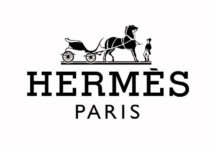The pharmaceutical (Pharma) industry develops new drugs and medicines for patients after going through various phases of marketing, sourcing, discovering, and manufacturing. It focuses on curing patients, avoiding diseases, and removing the symptoms of sick people. However, pharma companies also manage medical devices, brand and generic medications, and drugs. Today, we’ll discuss Porter’s five forces of pharma industry; it focuses on the bargaining power of buyers and suppliers, the threat of new entrants and substitutes, and competitive rivalry in the pharmaceutical industry.
Let’s discuss Porter’s five forces of pharma industry; it would focus on the bargaining power of buyers and suppliers, the threat of new entrants and substitutes, and competitive rivalry.
Porter’s Five Forces of Pharma Industry
Some of the key elements in Porter’s five forces of pharma industry are as follows;
Bargaining Power of Buyer in Pharma Industry
I-Purchase Size & Concentration
Bargaining power is the capability of buyers (insurance companies, hospitals, and individual customers) over the price negotiation. We can say that the bargaining power of buyers is low to medium because there are various pharmaceutical offering similar types of products under the same formula. The price negotiation is reliant on the size and concentration of purchase, and hospitals have the power to pay low prices for their big orders.
II-Doctor’s Prescription
On the other hand, many individual customers have lower bargaining power over price. It is because they have to follow to doctor’s prescription, and they don’t have any other option to buy the drug whatever they like. The doctor has professional expertise and customers have to follow his advice.
III-Price Dictation
There are some particular medicines that only a few pharma companies produce and they dictate the price. It gives them the power of monopoly due to high-tech research and development and unique products in the market. As a result, they dictate the price of whatever they like, otherwise, they would shift their business elsewhere.
Bargaining Power of Supplier in the Pharma Industry
I-Multiple Suppliers
The bargaining power of suppliers is low in the pharma industry. This is because there are multiple suppliers offering similar organic raw supplies and chemicals to the pharmaceutical companies. However, when any of the suppliers increase the price of raw supplies and organic supplies, pharma companies develop contracts with the other supplier.
Threat of New Entrants in Pharma Industry
I-High Cost
The threat of new entrants in the pharma industry is very low. It is because of high initial capital investment, and astronomical expense on research and development. Heavy capital expenses on R&D would push away many new potential competitors.
II-Regulations
Along with heavy costs and expenses, new pharmaceutical companies have to comply with strict government regulations while entering the market or launching a new product. Generic and patent antibiotics and other drugs would require approval from the FDA (Federal Drug Administration). There are various regulations focusing on various areas like the following;
- Right sourcing of supplies
- Distribution strategies
- Production and manufacturing processes
- Marketing and labeling
- Testing and safety protocols
III-Sale of Same Products
There are some drugs and medicines that have run for decades, and pharmaceutical companies benefit from their sale. Doctors prescribe those medicines, and customers buy them because they work undoubtedly. In fact, many companies are enjoying the high demand of customers.
Threat of Substitutes in Pharma Industry
I-High Demand for Generic Products
The threat of substitute products is very high in the pharma industry. This is because of the increasing demand for generic products relevant to the pricey patent products. However, the generic manufacturers of medicines produce already proven products and formulas, and they don’t invest resources in FDA approval regulations and R&D. That’s why the cost of generic products is very low compared to branded products.
II-Herbs & Traditional Approaches
Some of the natural herbs and supplements and traditional approaches like physiotherapy and yoga are the main substitutes for the pharma industry. They are increasing their influence due to the usage of digital and social media platforms, and people prefer alternative methods and substitute products. a
Competitive Rivalry in Pharma Industry
I-Public Information
Before launching any product in the market, pharmaceutical companies have to make the information public that their product is substituent for the already manufactured product. They’re like Voltra and Voren. When it happens, then it amplifies competitive rivalry and attracts patent or IPR lawsuits from the competitive rivals.
II-Merger & Acquisition
If the pharmaceutical companies don’t have any product in the pipeline, then it would negatively impact their profitability and future sales due to the limited product portfolio. Merger and acquisition is a great option for pharmaceutical companies because it allows them to buy out research and valuable assets of other companies.
Conclusion: Porter’s Five Forces of Pharma Industry
After an in-depth study of Porter’s five forces of pharma industry; we have realized that the pharmaceutical industry is a highly profitable industry with low competition. If you are learning about the pharma industry Porter’s five forces analysis; then you should keep in mind the abovementioned bargaining power of buyers and suppliers, the threat of new entrants and substitutes, and competitive rivalry.

Ahsan is an accomplished researcher and has a deep insight in worldly life affairs. He goes Live 3 days a week on various social media platforms. Other than research writing, he’s a very interesting person.


